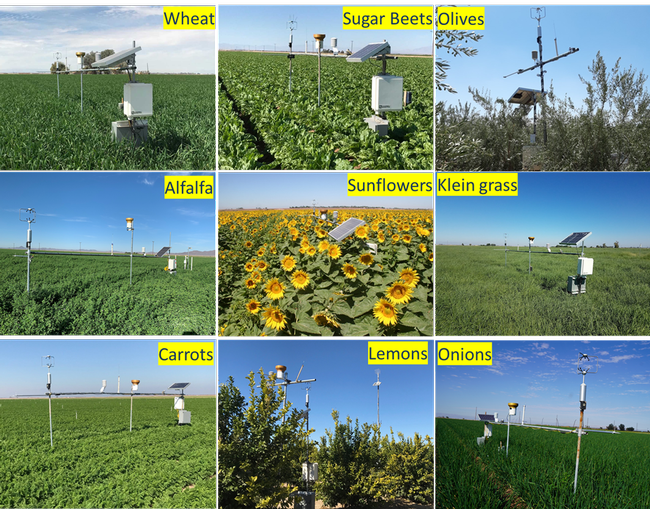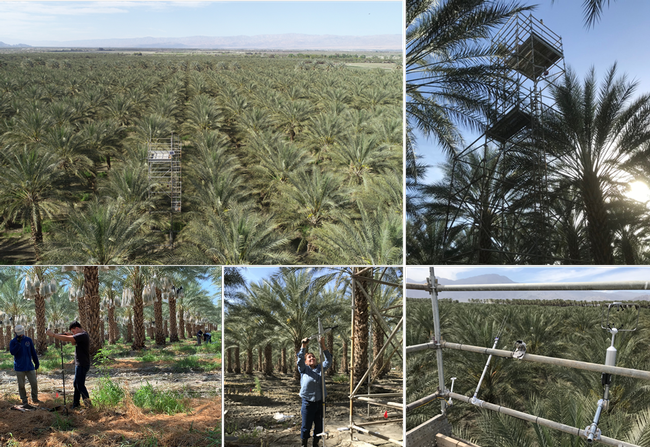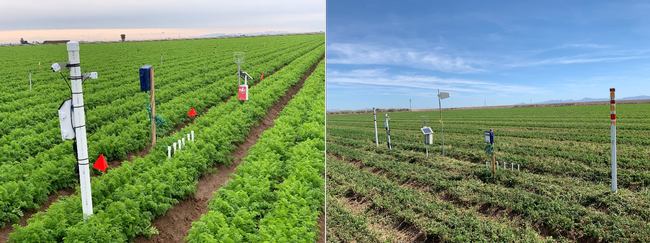UC ANR research helps Southern California farmers conserve water by an average of 15% and encourages others to make region-specific crop management and irrigation decisions, contributing to UC ANR's public value of protecting California's natural resources.
The Issue
Water scarcity will become a more significant concern in the Colorado River Basin due to altered weather patterns and multi-year droughts. Knowledge of the evapotranspiration (ET) of crops produced in Southern California will be critical to better managing limited water resources. Accurate information on crop water use and crop coefficient (Kc) is an immediate need for on-farm water conservation programs in the low desert region. Growers, irrigation and water districts, and researchers typically use crop coefficients developed in the Central Valley or other areas. Formulating this irrigation information for the Southern California region is crucial since the region has differences in climate, soil types and conditions, cropping systems, and irrigation and farming practices.

How UC Delivers
Extensive field measurements were conducted in 53 commercial fields over the last three-year for 11 agricultural commodities, including alfalfa, carrots, onions, Klein grass, date palm, lemons, olives, sugar beets, spinach, sunflowers, and wheat. The residual of energy balance method, which used a combination of surface renewal (SR) and eddy covariance (EC) techniques, was used to determine the actual ET and crop coefficients in each site. In addition, Tule technology, an affordable crop water use measurement sensor, was set up at the experimental sites for extension purposes. Twenty fully automated SR-EC ET towers, 60 Tule technology sensors, and more than 700 other various soil moisture sensors were set up in the Imperial, Coachella, and Palo Verde valleys. The study's crop coefficients and irrigation management best practices were periodically shared with cooperative growers to evaluate their practices, learn about the advantages of sensor-based irrigation management, and encourage utilizing the tools and information to improve irrigation management and yield production. Additionally, the information was discussed with local irrigation and water districts in different events and meetings, and study findings were published in several extension articles and peer-reviewed journals.

The Impact
As a result of collaborating in this study, a cooperative date grower found that water use efficiency improved by 18%, puffy skin diseases of date fruits reduced, and fruit quality improved overall. The study, which includes nearly 50% of crops grown in the region, helped participating growers conserve water by 15% on average across various agricultural commodities. Furthermore, these findings provide evidence about the benefits of the residual of energy balance method, water use sensors, and soil moisture sensors specifically in southern California. The most accurate crop coefficients for the cropping systems and the best factual guidance available provide significant benefits to the region by supporting enhanced water and nutrient use efficiency and drought resilience information for profitable and sustainable crop production. The tools developed by this program have the potential to yield large dividends through not only improved resource use efficiency but also best management practices and crop quality. Local irrigation and water districts may utilize the information in their on-farm efficiency conservation and water delivery programs. Additionally, adopting these knowledge-based information and tools in combination with CIMIS (California Irrigation Management Information System) or Spatial CIMIS data may benefit the region more than $7.5 million in water and energy savings.

These outcomes demonstrate UC ANR's public value of protecting California's natural resources. The following links are publications associated with this study that have been shared in agricultural journal and research settings:
UC ANR Agricultural Brief: May 2021
Vegetables West July/August 2020 Issue
UC ANR Agricultural Brief: December 2019
UC ANR Agricultural Brief: July 2019
UC ANR Agricultural Brief: October 2018
UC ANR Agricultural Brief: July 2018
UC ANR Agricultural Brief: March 2018